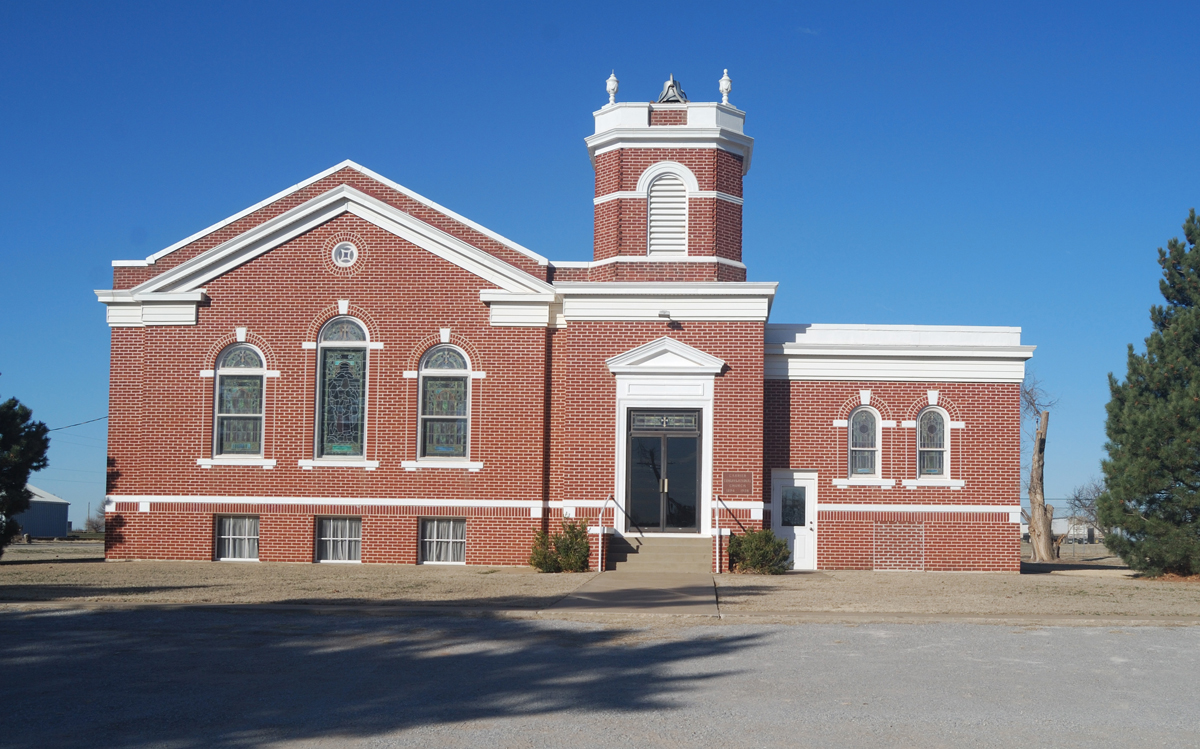CARRIER.
The Garfield County town of Carrier is located on State Highway 132, five miles north of its junction with U.S. Highway 60. The site is approximately seven miles due northwest of Enid, the county seat. The opening of the Cherokee Outlet in 1893 provided settlers the opportunity to file for homesteads and build up farms around future Carrier. After two years of serious crop failures, wheat became the most important cash crop.
The town grew from a dispersed rural community into a thriving town at the turn of the twentieth century. A Congregational church group had begun meeting at a local homestead in August 1894, and they completed a building in 1895, the town's first building. It also briefly served as a schoolroom. Solomon Carrier, who erected the area's first store in 1895, was appointed postmaster on May 22, 1897. The second business to open was McNeil's Blacksmith Shop. The town of Carrier was platted in August 1903 by the Northwestern Townsite Company as the Arkansas Valley and Western Railway was planning to construct a line through the region from Enid to Avard. Carrier was laid out on the homesteads of Herbert Caldwell, Arthur Nay, R. I. Boyington, and Zue Carrier Pope, and the businesses and residents moved approximately one mile to the new location. The railroad was completed in 1904 (after 1907, it was the St. Louis and San Francisco Railway, or Frisco).
Social and educational offerings soon appeared. Carrier General Mercantile's upper floor became the schoolhouse in 1896. A town band, organized by Fred McClane and said to be the first one in the Cherokee Strip, entertained the citizens from 1895. In 1895 Solomon Carrier donated land for a church school, and in September 1898 Northwestern Academy was opened by the Congregational Church Building Society. Basically nondenominational in its admissions policy, the school opened with a faculty of five, led by C. L. Hollem as principal. It offered classes to prepare students for Kingfisher College and remained open for twelve years.
The community provided appropriate services for an agriculture-based economy: two grain elevators, two blacksmiths, a lumberyard, and a hardware store. Travelers were served by a hotel and a livery stable. A 1909 state gazetteer credits Carrier with a bank, Congregational and Lutheran churches, and a telephone exchange. The Carrier Monitor informed the residents in the early 1900s. An oil boom in pre–World War I Garfield County provided jobs in the petroleum industry, a trend that continued through the twentieth century.
Carrier incorporated in 1972. The town's population was not officially counted until 1980, but state gazetteers in 1909 and 1918 credit it with 200 and 350 inhabitants, respectively. The surrounding Hobart Township had tallied 589 occupants in 1900, a number that rose to 718 by 1910. Carrier's 1980 population of 259 had declined to 77 by the year 2000 but rose to 85 in 2010. In April 2020 the census reported 87 inhabitants. Many residents commute to work in nearby Enid.
See Also
Learn More
"Carrier," Vertical File, Public Library of Enid and Garfield County, Enid, Oklahoma.
"Carrier," Vertical File, Research Division, Oklahoma Historical Society, Oklahoma City.
Donna Gene Gigoux and Earl J. Estill, Carrier, Oklahoma, Our Story (Dexter, Mich.: Thomson-Shore, 1991).
Stella Campbell Rockwell, ed., Garfield County, Oklahoma, 1893–1982, Vol. 2 ([Enid, Okla.]: Garfield County Historical Society, 1982).
Citation
The following (as per The Chicago Manual of Style, 17th edition) is the preferred citation for articles:
Dianna Everett, “Carrier,” The Encyclopedia of Oklahoma History and Culture, https://www.okhistory.org/publications/enc/entry?entry=CA061.
Published January 15, 2010
Last updated March 1, 2024
© Oklahoma Historical Society


